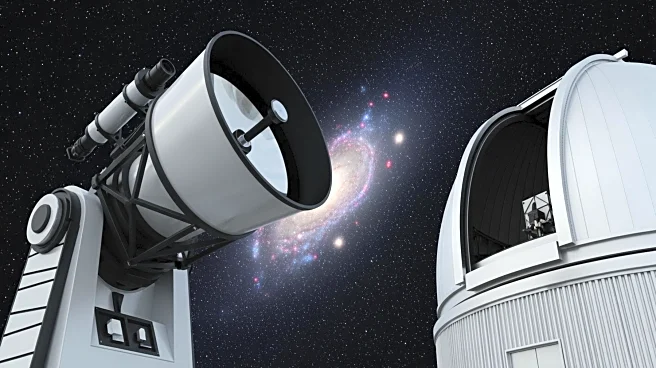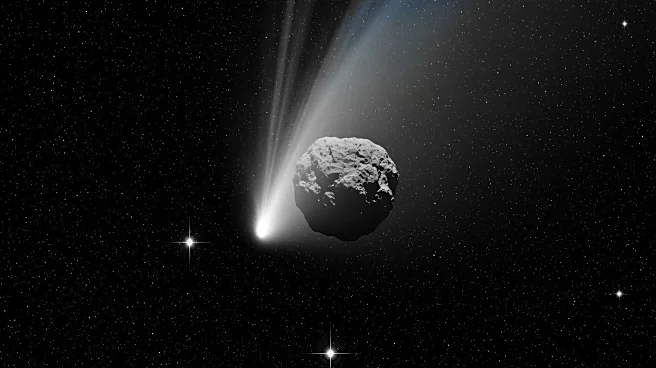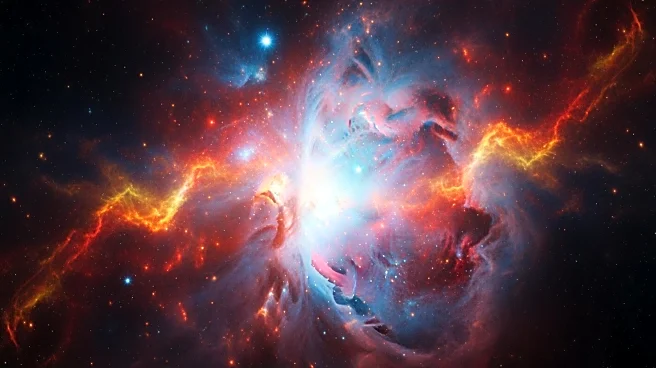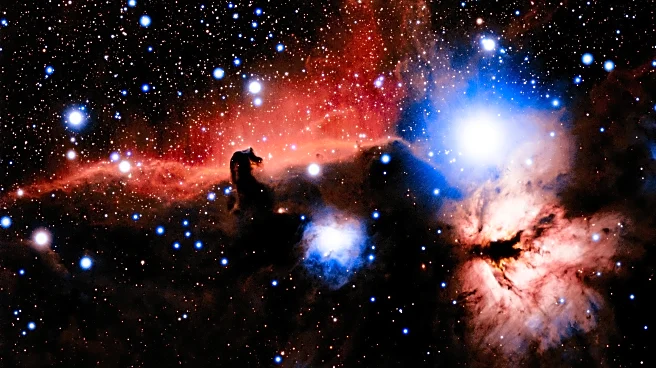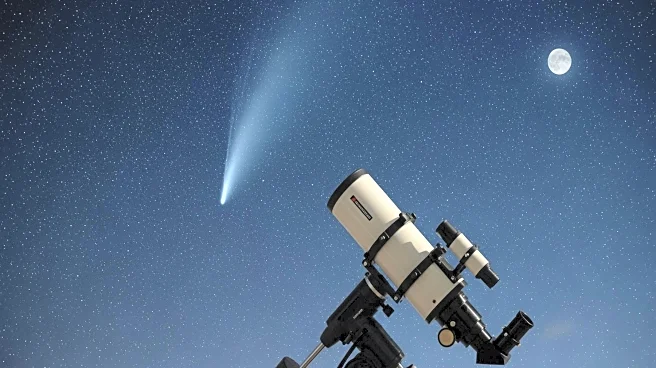What's Happening?
The Rubin Observatory, located on Cerro Pachón in the Andes Mountains in Chile, is advancing the field of astronomy with its cutting-edge technology. Named after astronomer Vera Rubin, the observatory
is equipped with the LSST camera, the largest digital camera ever built, capable of capturing an area of the sky 40 times the size of the full moon in a single exposure. This technology allows the observatory to scan the night sky in real-time, creating a digital movie of the universe. The National Science Foundation's NOIRLab supports this initiative, providing telescopes and data infrastructure that enable discoveries across various cosmic phenomena, including stars, galaxies, dark matter, and exoplanets. The observatory's data will be publicly available, allowing scientists and citizen scientists worldwide to explore and analyze the cosmos.
Why It's Important?
The Rubin Observatory's real-time scanning capabilities represent a significant advancement in astronomical research. By producing tens of petabytes of data over the next decade, the observatory will help address pressing cosmic questions, such as the nature of dark matter and dark energy. Additionally, the observatory's ability to study potentially hazardous asteroids that may collide with Earth is crucial for planetary defense. The public availability of this data democratizes access to astronomical research, empowering a global community of scientists and enthusiasts to contribute to discoveries and deepen our understanding of the universe.
What's Next?
As the Rubin Observatory continues to collect data, astronomers will focus on analyzing the vast amounts of information to uncover new insights into the universe's mysteries. The observatory's findings could lead to breakthroughs in understanding cosmic phenomena and potentially influence future space exploration missions. The collaboration between professional and citizen scientists may foster innovative approaches to data analysis and interpretation, further expanding the scope of astronomical research.
Beyond the Headlines
The Rubin Observatory's approach to making data publicly available highlights the growing trend of open science, which encourages transparency and collaboration in research. This model could inspire other scientific fields to adopt similar practices, promoting inclusivity and accelerating the pace of discovery. Additionally, the observatory's focus on real-time data collection may set a precedent for future astronomical projects, emphasizing the importance of continuous observation in understanding dynamic cosmic events.



